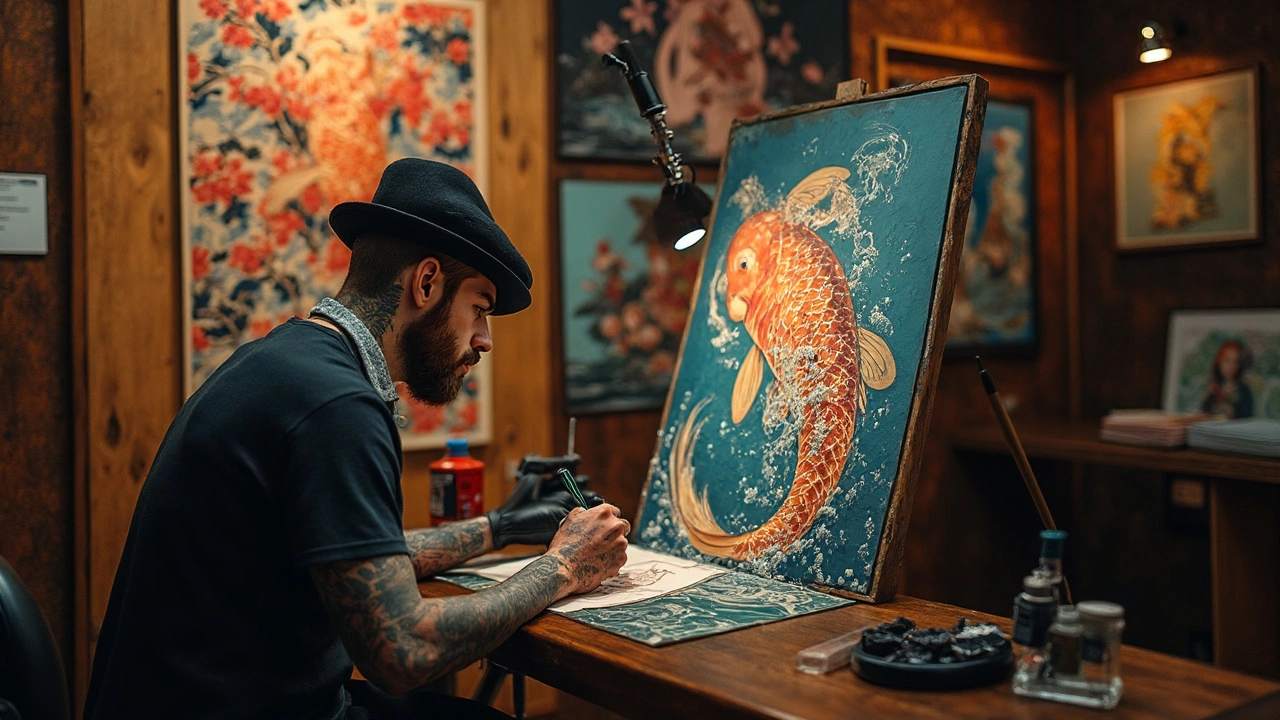Japanese culture: practical inspiration for artists and curious minds
Japan pairs quiet tradition with bold modern design. Want quick, usable ideas you can apply to art, interiors, or daily creativity? Start with a few simple Japanese concepts and you’ll see how they change what you make and how you look at things.
Core aesthetics you can use right away
Wabi-sabi is about finding beauty in the imperfect and the worn. For artists, that means leaving rough brushstrokes, choosing muted tones, or letting textures show. Kintsugi—repairing pottery with gold—turns flaws into focal points. Try a small series where you highlight mistakes instead of hiding them.
Ma means negative space. It’s not emptiness; it’s deliberate breathing room. Apply ma by simplifying compositions, giving subjects a margin to ‘breathe,’ or using empty wall space to make one artwork pop. Even one uncluttered corner can sharpen the whole piece.
Ukiyo-e taught Western artists about flat color, bold outlines, and cropped composition. Look at Hiroshige or Hokusai for framing ideas: tight crops, diagonal lines, and simplified color blocks can make images feel immediate and modern.
Practical tips for design and craft
Materials matter. Natural fibers, handmade paper, wood grain, and unglazed ceramics add warmth and honesty. If you design digitally, mimic those materials with subtle grain, paper textures, or off-white palettes to avoid a cold, sterile look.
Use limited palettes. Many Japanese interiors and prints rely on two or three colors plus neutrals. That restraint boosts clarity. Pick one dominant color, one accent, and keep the rest quiet.
Balance function with beauty. Japanese design often solves a problem while still looking elegant. Ask: does this object work better than before? If yes, simplify its form rather than decorate it more.
Mix old and new. Pair a handcrafted item with a modern lamp, or place a traditional print in a minimalist frame. This contrast keeps things lively without feeling chaotic.
Want to learn fast? Study single works closely. Spend 10 minutes with one ukiyo-e print or a tea bowl. Note composition, texture, and what draws your eye first. Repeat with different pieces and you’ll start picking up rules without memorizing them.
Where to experience Japanese culture: visit local museums that show Japanese prints or ceramics, watch films by Ozu or Kurosawa for cultural rhythms, and attend tea ceremonies or craft workshops when possible. Festivals (matsuri) are great for color, pattern, and street-level creativity.
Change one habit: introduce a tiny bit of wabi-sabi into a project, or clear space around a focal point. Small moves lead to fresh work and clearer choices. Japanese culture isn’t a set of rules to follow—think of it as a toolkit that nudges your eye and simplifies your process.

